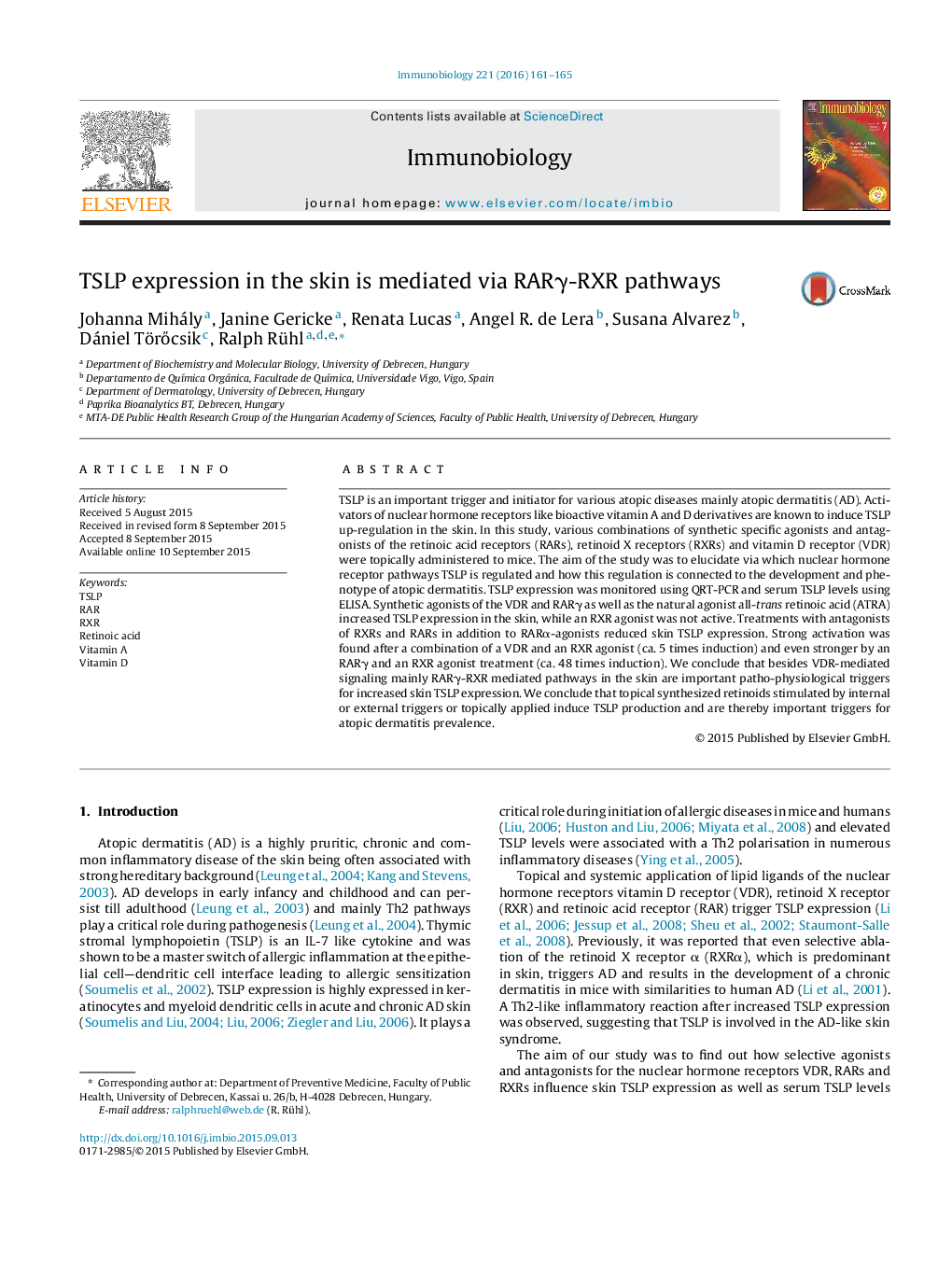| Article ID | Journal | Published Year | Pages | File Type |
|---|---|---|---|---|
| 2182756 | Immunobiology | 2016 | 5 Pages |
TSLP is an important trigger and initiator for various atopic diseases mainly atopic dermatitis (AD). Activators of nuclear hormone receptors like bioactive vitamin A and D derivatives are known to induce TSLP up-regulation in the skin. In this study, various combinations of synthetic specific agonists and antagonists of the retinoic acid receptors (RARs), retinoid X receptors (RXRs) and vitamin D receptor (VDR) were topically administered to mice. The aim of the study was to elucidate via which nuclear hormone receptor pathways TSLP is regulated and how this regulation is connected to the development and phenotype of atopic dermatitis. TSLP expression was monitored using QRT-PCR and serum TSLP levels using ELISA. Synthetic agonists of the VDR and RARγ as well as the natural agonist all-trans retinoic acid (ATRA) increased TSLP expression in the skin, while an RXR agonist was not active. Treatments with antagonists of RXRs and RARs in addition to RARα-agonists reduced skin TSLP expression. Strong activation was found after a combination of a VDR and an RXR agonist (ca. 5 times induction) and even stronger by an RARγ and an RXR agonist treatment (ca. 48 times induction). We conclude that besides VDR-mediated signaling mainly RARγ-RXR mediated pathways in the skin are important patho-physiological triggers for increased skin TSLP expression. We conclude that topical synthesized retinoids stimulated by internal or external triggers or topically applied induce TSLP production and are thereby important triggers for atopic dermatitis prevalence.
